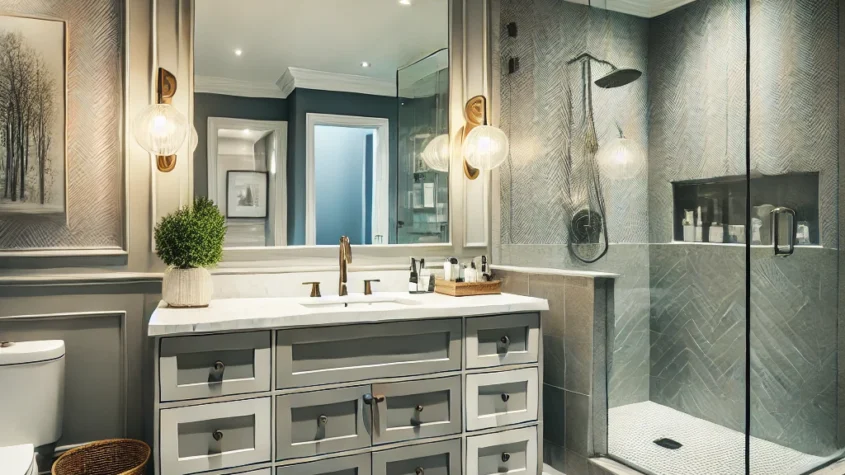
Custom kitchens Toronto blend functionality with personal style, transforming spaces into culinary havens. These tailored designs cater to individual tastes and needs, ensuring that every kitchen is not only beautiful but also practical. Homeowners can choose from a variety of materials, layouts, and finishes that reflect their unique preferences.
In a city known for its diverse architecture and design influences, a custom kitchen can enhance property value and livability. Innovative solutions, such as efficient storage and smart technology, are integrated seamlessly into the design, allowing for a modern cooking experience. This customization process often involves collaboration with skilled designers and contractors, making it essential for homeowners to understand their options.
With the right approach, creating a custom kitchen can be an exciting journey. From concept to completion, individuals can enjoy the satisfaction of cooking in a space that truly feels like their own. The transformation is about more than aesthetics; it’s about creating a functional environment that enhances daily living.
Designing Custom Kitchens in Toronto
Creating custom kitchens in Toronto involves understanding client requirements, innovative design, durable materials, and the integration of technology. These elements work together to produce functional and aesthetically pleasing spaces.
Identifying Client Needs
A successful kitchen design starts with understanding the client’s lifestyle and cooking habits. Designers often conduct thorough consultations to gather information on daily routines, family size, and specific preferences.
Key considerations:
- Functionality: Laying out spaces for cooking, prepping, and entertaining.
- Aesthetics: Determining preferred styles, colors, and themes.
- Budget: Clarifying financial constraints early to guide design decisions.
Understanding these needs helps designers create personalized solutions that will serve the client for years to come.
Innovative Space Planning
Efficient space planning is critical in custom kitchen design. Designers must consider the kitchen’s functionality and flow while maximizing storage and counter space.
Using techniques such as the work triangle can enhance usability:
- Cooking Zone: The stove, oven, and grill.
- Preparation Zone: Counter space and sink.
- Storage Zone: Cabinets, pantries, and drawers.
Designs should also consider traffic patterns, ensuring that areas don’t become congested during cooking or entertaining.
Material Selection for Durability and Aesthetics
Choosing the right materials is crucial for longevity and visual appeal. Typically, designers recommend materials that withstand wear while enhancing the kitchen’s look.
Popular choices include:
- Countertops: Quartz for durability, granite for natural beauty, and laminate for budget-friendly options.
- Cabinetry: Solid wood for strength, plywood for moisture resistance, and MDF for a smooth finish.
- Flooring: Tile for water resistance, hardwood for warmth, and vinyl for easy maintenance.
Combining these materials thoughtfully can create a balanced and inviting environment.
Incorporating Smart Technology
Smart technology is becoming an essential part of modern kitchen design. Integrating these devices can significantly enhance convenience and efficiency.
Examples include:
- Smart Appliances: Refrigerators that track inventory, ovens that can be controlled remotely.
- Lighting Systems: Adjustable lights for different activities, such as cooking or dining.
- Smart Home Integration: Voice-activated controls for hands-free operation.
Incorporating these technologies requires careful planning to ensure compatibility and ease of use, ultimately leading to a modern, efficient kitchen.
The Process of Creating Custom Kitchens
Creating a custom kitchen involves a structured process that ensures every detail aligns with the client’s vision. This process typically includes four key stages: consultation, planning, craftsmanship, and support after installation.
Initial Consultation and Design Concept
The journey begins with an initial consultation, where the designer meets with the client to discuss preferences, lifestyle needs, and budget. This meeting is crucial for gathering information about the client’s desired style, functional requirements, and any specific features they want to incorporate.
During this phase, designers may present a variety of materials, finishes, and layouts to visualize concept ideas. Clients often receive questionnaires to further clarify their expectations and preferences. This collaborative approach lays the foundation for a design concept that resonates with the client’s unique personality and needs.
Detailed Planning and 3D Rendering
Once the design concept is established, detailed planning takes place. This phase includes creating precise measurements and determining the layout to maximize usability and aesthetics. The designer collaborates with architects and contractors to ensure the space can accommodate the envisioned features.
3D rendering technology plays a significant role in this stage. It allows clients to see a realistic visual representation of their future kitchen. Adjustments can be made easily based on client feedback, which enhances satisfaction with the final design. This visual process aids in finalizing material selections and color schemes.
Craftsmanship and Installation
With the plans approved, the craftsmanship phase begins. Skilled artisans and builders work to create custom cabinetry, countertops, and other elements according to the approved design. This phase often involves selecting high-quality materials and finishes to ensure durability and style.
Installation teams then execute the plan, carefully fitting each piece into place. They focus on precision to maintain quality and aesthetic harmony throughout the kitchen. Coordination among tradespeople is essential to meet timelines and maintain a smooth workflow during installation.
Post-Installation Support
After the installation is complete, a crucial phase of post-installation support follows. Designers check in with clients to ensure everything meets expectations and functions as intended. This follow-up can include addressing minor adjustments or concerns that arise after the kitchen is completed.
Clients may receive guidance on maintenance and care for their new kitchen features. Continuous support enables a long-lasting relationship between the client and the design team, fostering satisfaction and confidence in the investment made in their custom kitchen.
Dumpster Near Me: Find the Best Local Rental Options for Your Needs
Finding a dumpster near me can streamline your cleanup efforts, whether it’s for a h…









